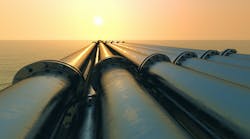Operators of industrial boilers, kilns, pulp mills, mines and incinerators are facing huge investments to meet recently passed national regulations and imminent additional regulations by individual states, according to McIlvaine Company. The expenditure will exceed $1 bil. per year over the next five years as thousands of projects ranging from $100,000 to $25 mil. will be undertaken. These projects are identified in the McIlvaine report, “U.S. Industrial Emitters,” a database that covers over 40,000 industrial sources in the U.S.
Three major national rules have been promulgated. They deal with air toxics and affect the cement industry, operators of industrial and commercial boilers, and operators of solid and liquid waste incinerators. McIlvaine predicts there will be extensive investment in fabric filters to capture the toxic metals. In many cases, activated carbon or other chemicals will be needed to capture mercury. Removal of hydrogen chloride will also be necessary and will generate markets for wet scrubbers. Organics, such as the kerogens in limestone used in the cement industry also generate organic toxics and will create a market for thermal treatment technologies, McIlvaine says.
Several thousand plants will be installing new air pollution control systems, but nearly 6,000 plants will be making investments in monitoring and control of process and combustion operations. McIlvaine notes Mercury and PM mass monitors are very expensive, but will only be required for 1,000 plants. However, monitors for CO and O2 will be required at many plants.
McIlvaine says it is likely that rules will be promulgated by individual states, which will force the addition of NOx, SOx and particulate matter (PM) reduction equipment. This is in addition to that required by the national standards. The states are required to take whatever actions are necessary to bring the ambient air quality to a level specified in federal regulations.
Even though many areas are in attainment with ambient standards, they are upwind of areas which are in non-attainment. These attainment areas will be subject to lawsuits by the downwind areas. The end result is that equipment will be required at many locations and not just within the non-attainment areas, McIlvaine says.
The discovery of large quantities of shale gas and the resultant low price of natural gas will ensure the stability and even modest growth in the U.S. industrial base. As a result, the vast majority of plants will make the necessary expenditures to remain in business, McIlvaine concludes.
For more information on U.S. Industrial Emitters, click here.

